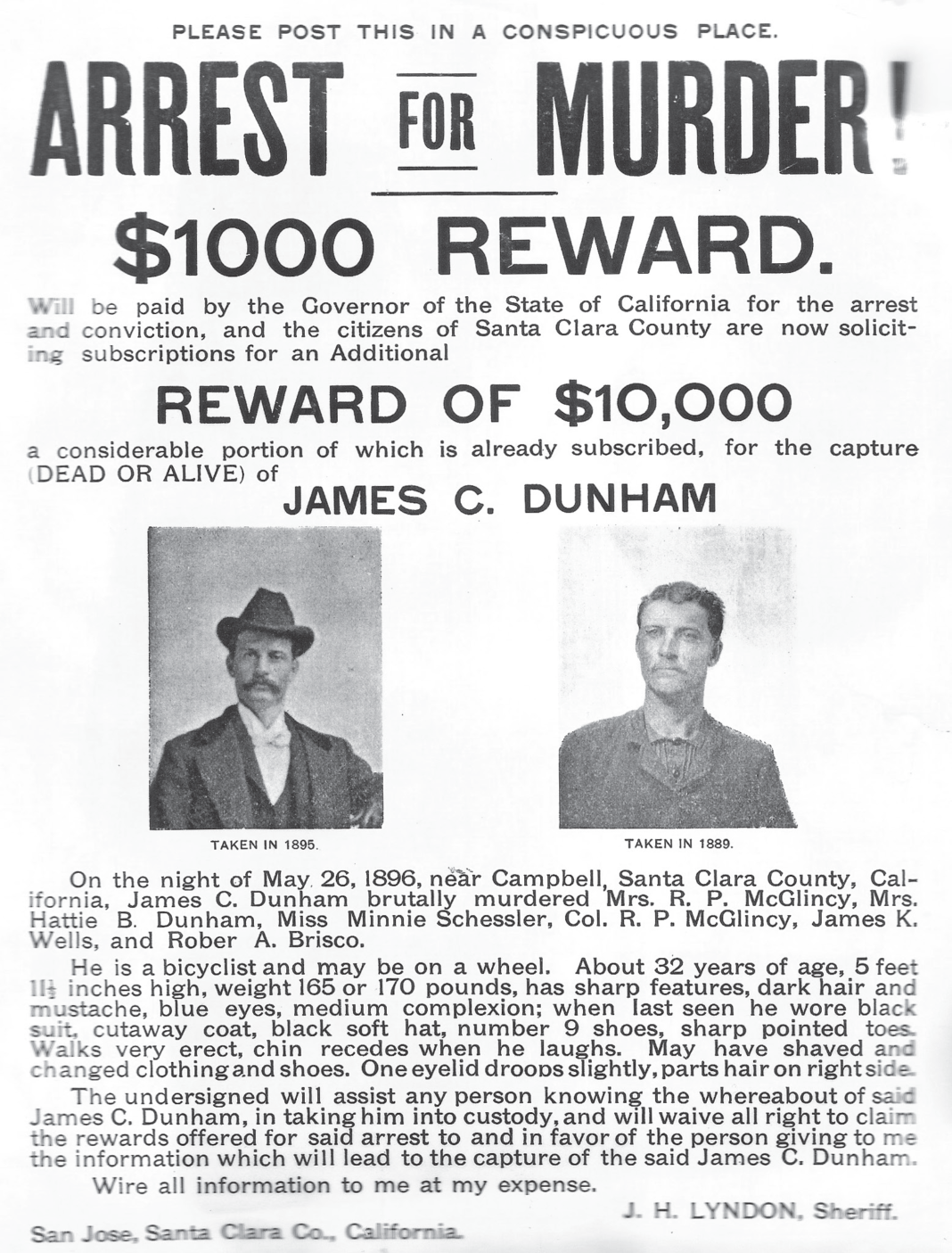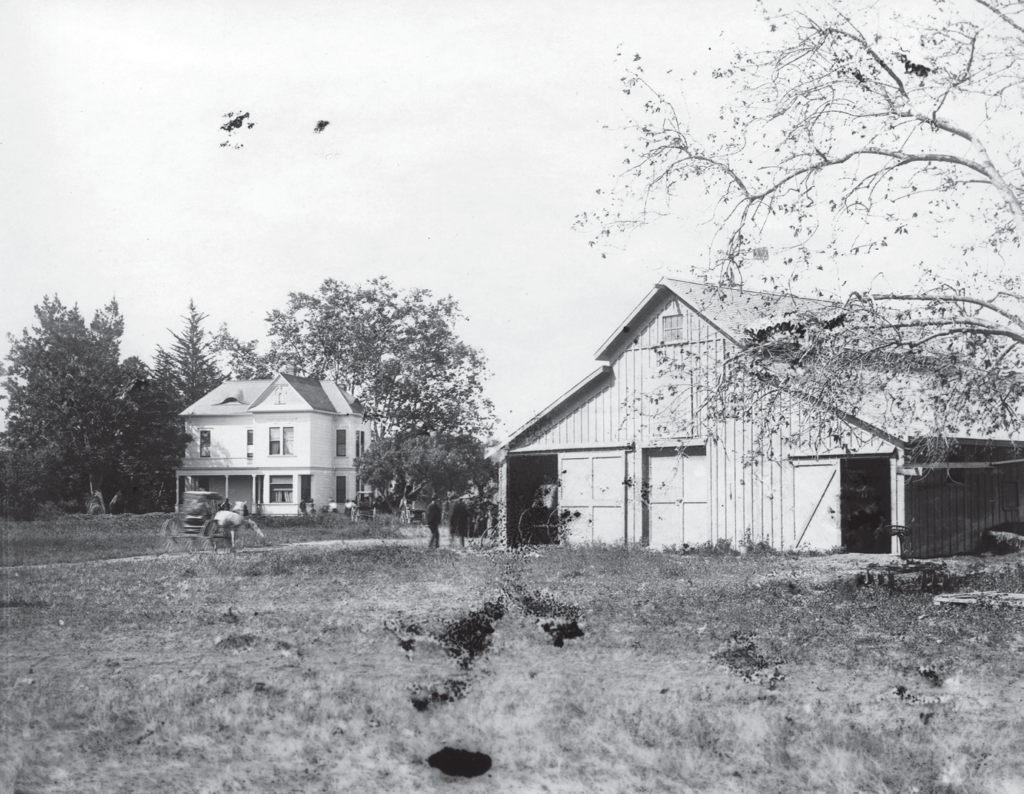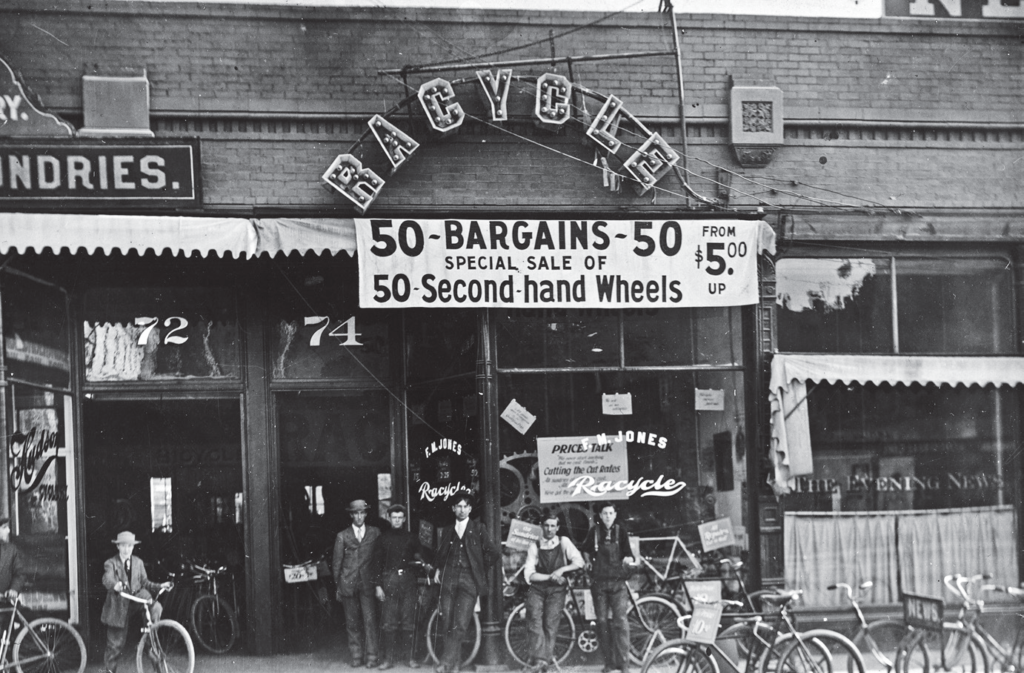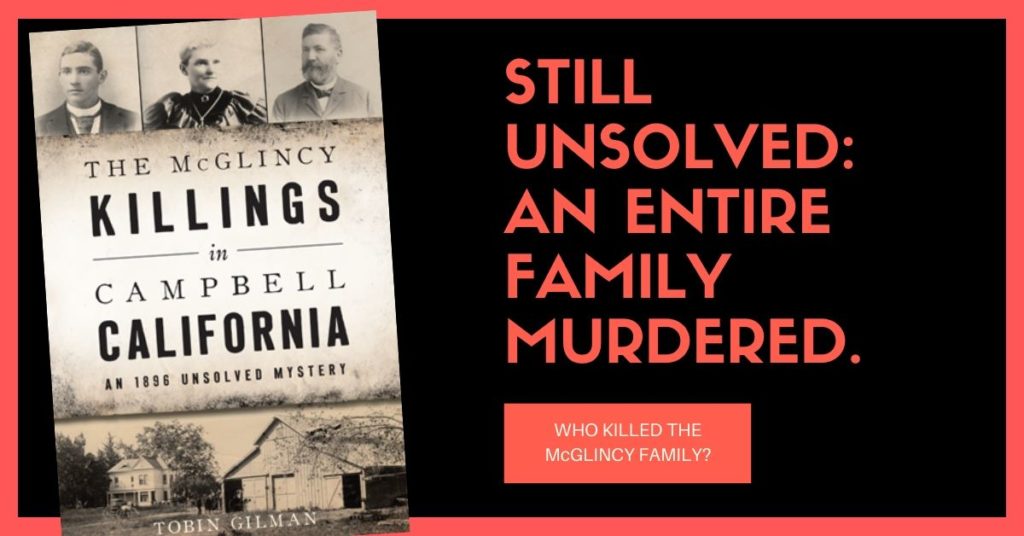
When we think of getaway cars, certain famous images spring to mind: Bonnie and Clyde’s rickety jalopy, for instance. Or a sleek 1977 Pontiac Firebird Trans Am, which Burt Reynolds used to evade the law in spectacular fashion in Smokey and the Bandit. But prior to the invention of the automobile, what other options did crooks have? The still unsolved murder in California of the McGlincy family in 1896 provides an interesting and tragic view of how one man decided to go on the lam.
Author Tobin Gilman, a longtime resident and historian of the San Jose area, tells the story of one of the worst crimes in California history. In May 1896, six people were found dead on their farm in Campbell, California, slain in gruesome fashion with both axe and gun. In his book The McGlincy Killings in Campbell California: An 1896 Unsolved Mystery, Gilman recounts the story of thirty-one year-old James Dunham, who murdered nearly his entire family, including his father-in-law, mother-in-law, wife, brother-in-law, and two household employees. The only survivors were a ranch hand and Dunham’s own infant son. This wasn’t the first unsolved murder in California and wouldn’t be the last, but few were as gruesome or tragic, and hardly any had a chase as exciting as Dunham’s.

The crime took place on May 26th, 1896, and by the early hours of the 27th, Dunham had long fled the scene. Based on brief encounters he had with area residents along the way (who knew nothing of the crime), law enforcement was able to track him little by little as he wound through Santa Clara County. We say wound, because as the manhunt intensified, law enforcement had to consider an unusual possibility: that rather than riding a horse, Dunham was riding a set of wheels.

For Dunham wasn’t just a murderer. He was a skilled long-distance cyclist.
The day before the murders, Dunham had been seen working on a bike in downtown Campbell, and other witnesses testified that they had seen him riding a tandem bike that same night. Then, a few days into the manhunt, investigators found a key clue. Gilman:
“By late Wednesday morning, officers found Dunham’s bicycle hidden in some brush along Dry Creek, which ran near the McGlincy ranch. … Authorities suspected that Dunham may have concealed the wheel before the murders with plans to recover it as a getaway vehicle if he had been unable to secure a horse. Dunham was an expert wheelman who was used to riding long distances.”

According to Gilman, routes out of the area differed sharply based on local topography. Had Dunham taken his bike, he likely would have ridden down the valley roads to escape Santa Clara County, possibly cycling all the way to Mexico. But the fact that the bike was abandoned—regardless of who had planted it, Dunham or an accomplice—suggested another option, that Dunham had kept the horse he had stolen from the McGlincy farm and fled instead into the mountains.
Into the mountains the officers went, then, recruiting a small army of local vigilantes and bounty hunters to aid in their hunt. But despite weeks of searching, and even more tantalizing clues—scraps of clothing, recent campfires, and other indications of hasty flight—Dunham was, remarkably, never found. Like other great escapes we’ve profiled, in this one, he actually got away. By 1897 the only clues that were still appearing proved to be false leads, often by attention-seekers who wanted to participate in the ‘crime of the century.’ Unreliable evidence and mistaken identifications continued to plague the case as late as ten years later, and ultimately, it was left unresolved.
How did the Campbell detectives pursue the case? How did Dunham in fact get away in those first critical hours? And why would he kill his entire family, but spare his infant son? Did this tragic, unsolved murder in California forebode for the Golden State’s reputation as a haven for killers? The answers to those questions are all found in Gilman’s book—but for now, we can only wonder how history would have been different had the horses all bolted from the farm, and murder would have been served—on wheels.




